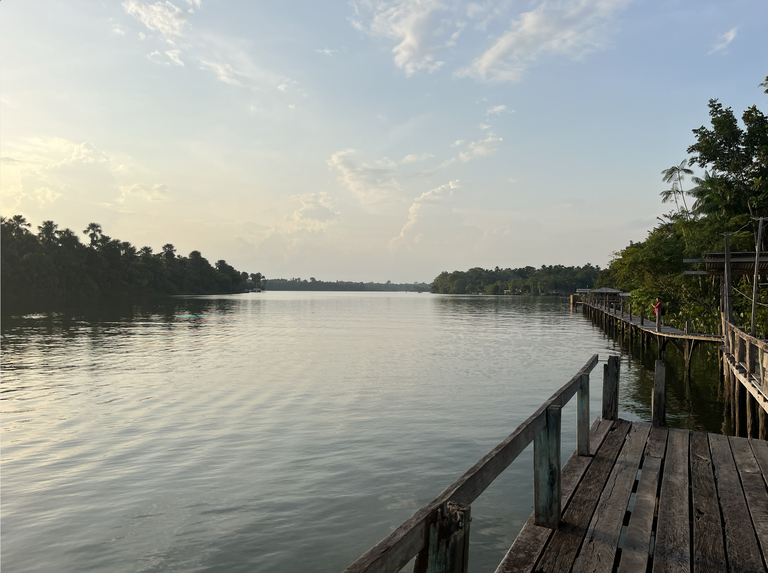First field campaign in the Baixo-Tocantins hotspot in the Brazilian Amazon region
NOV 13 2022
The HARMONIZE Brazilian team conducted the first field campaign in the Baixo Tocantins hotspot in the Amazon region. The field campaign aimed to map and contact stakeholders from different administrative levels of the health, environmental and educational sectors and start the consultative committee organisation to co-design the next engagement activities.
In November 2022, part of the HARMONIZE Brazilian team, Cláudia Codeço, Isabel Escada, Ana Cláudia Rorato and Sidnei Sant’Anna, together with Raquel Lana from BSC conducted the first field campaign in the Baixo Tocantins hotspot in the Amazon region. The field campaign mapped and contacted stakeholders from different administrative levels of the health, environmental and educational sectors to learn about their work environment organisation, data information and flow, knowledge and interest in climate and environment change and health impacts and to introduce HARMONIZE project to them. This is fundamental to organise the consultative committee for the Baixo Tocantins hotspots and to guide the public engagement activities that will happen next September/October 2023.
Key informants were interviewed about the major endemic diseases registered in the region, such as Chagas and dengue and their perception of the relationship between climate and these diseases. Further, interviewees were also asked about how the climate has changed in the region. The preliminary results from these discussions indicate that the region has faced complex structural problems, with parts of the population experiencing problems with clean water supply, garbage disposal, violence, extreme poverty, and drug abuse. These vast challenges compete for their attention and make the problems raised by climate change seem like a secondary issue. Still, many informants were aware of how the climate and the environment have changed in the last decades and how these changes have affected their livelihoods. They were receptive to learning more about this topic and contributing to mitigating the adverse impacts of climate and disease.
In HARMONIZE, we will strategically undertake one-off longitudinal ground truth data collection using drone technology and low-cost weather sensors to improve classification algorithms and down-scaling of coarser-resolution environmental datasets. For example, very high-resolution drone imagery can provide the necessary data to monitor fine-scale changes in vector habitat and improve artificial intelligence (AI) classification algorithms of coarser scale satellite images over a wider geographical area. In this context, interviews were also conducted to understand what the community knows and how it thinks about drones being used for research in their neighbourhood. Most declared previous experience observing drones but not having close contact with them. Drones have been used in the region for mapping by governmental institutions and academic purposes. One public health agent mentioned using drone images to produce a community map to help local health surveillance activities. The community generally showed interest in collaborating with our research and the products to be made available for them. Meanwhile, they gave the team feedback on the possibilities for using drone images, meteorological stations and data visualisation tools within the scope of the HARMONIZE deliverables.
Next March, we will have the first consultative committee meeting to keep in touch with the stakeholders and users at the Baixo Tocantins hotspot and start co-designing the community engagement and the field campaign we will conduct next semester.

